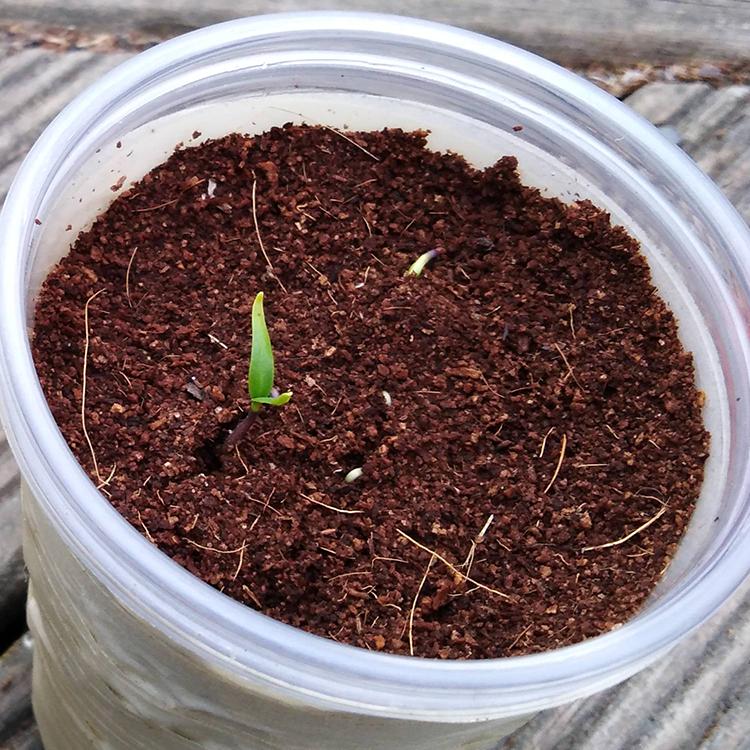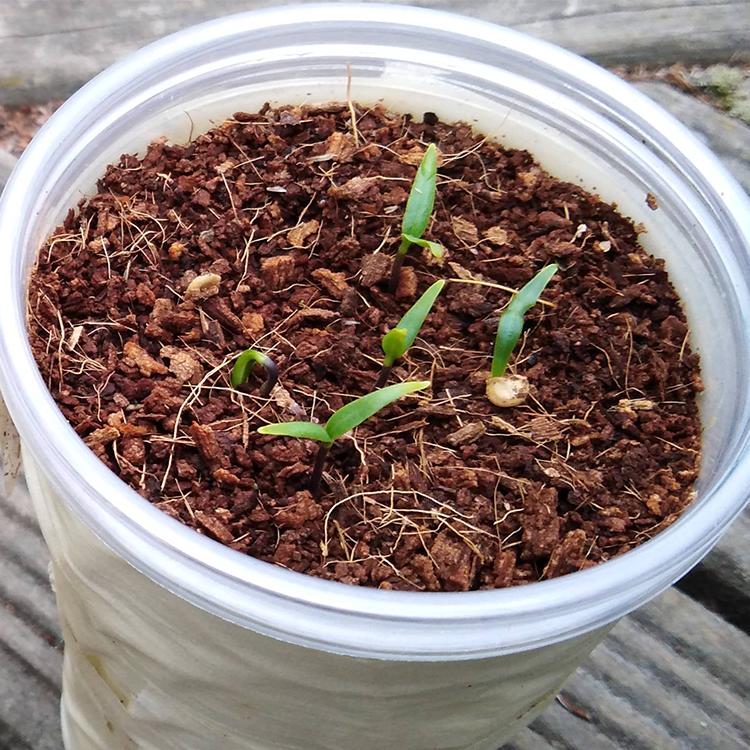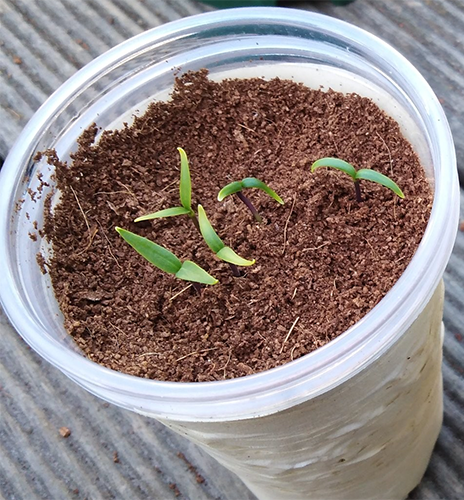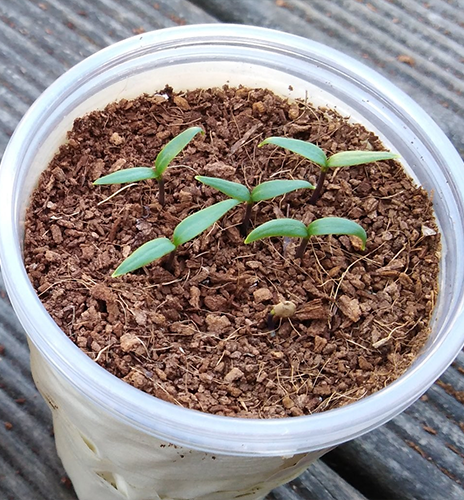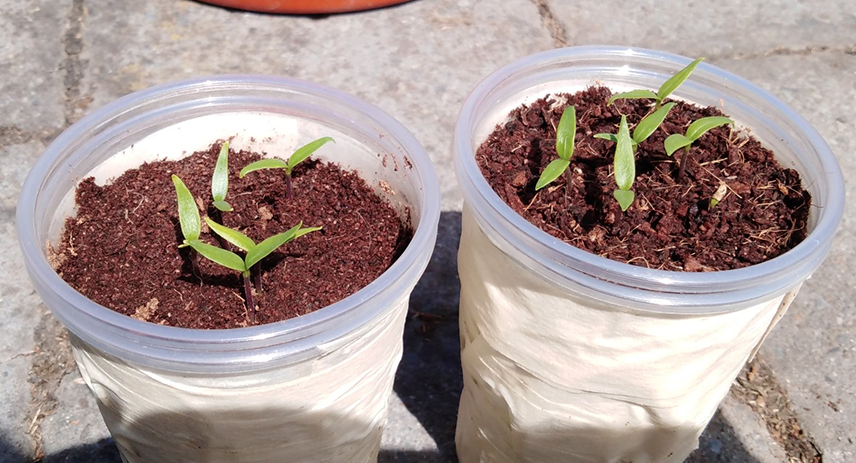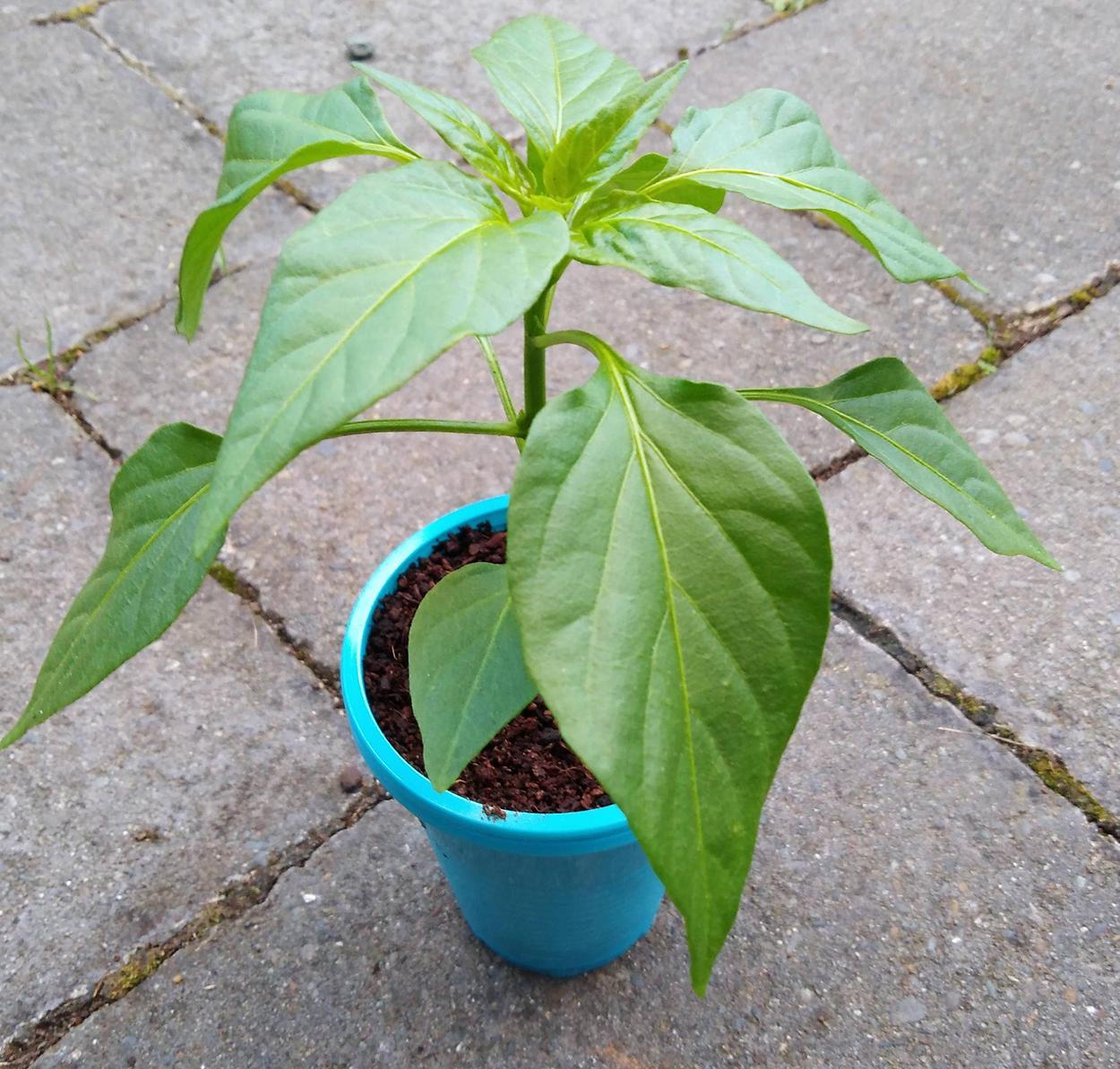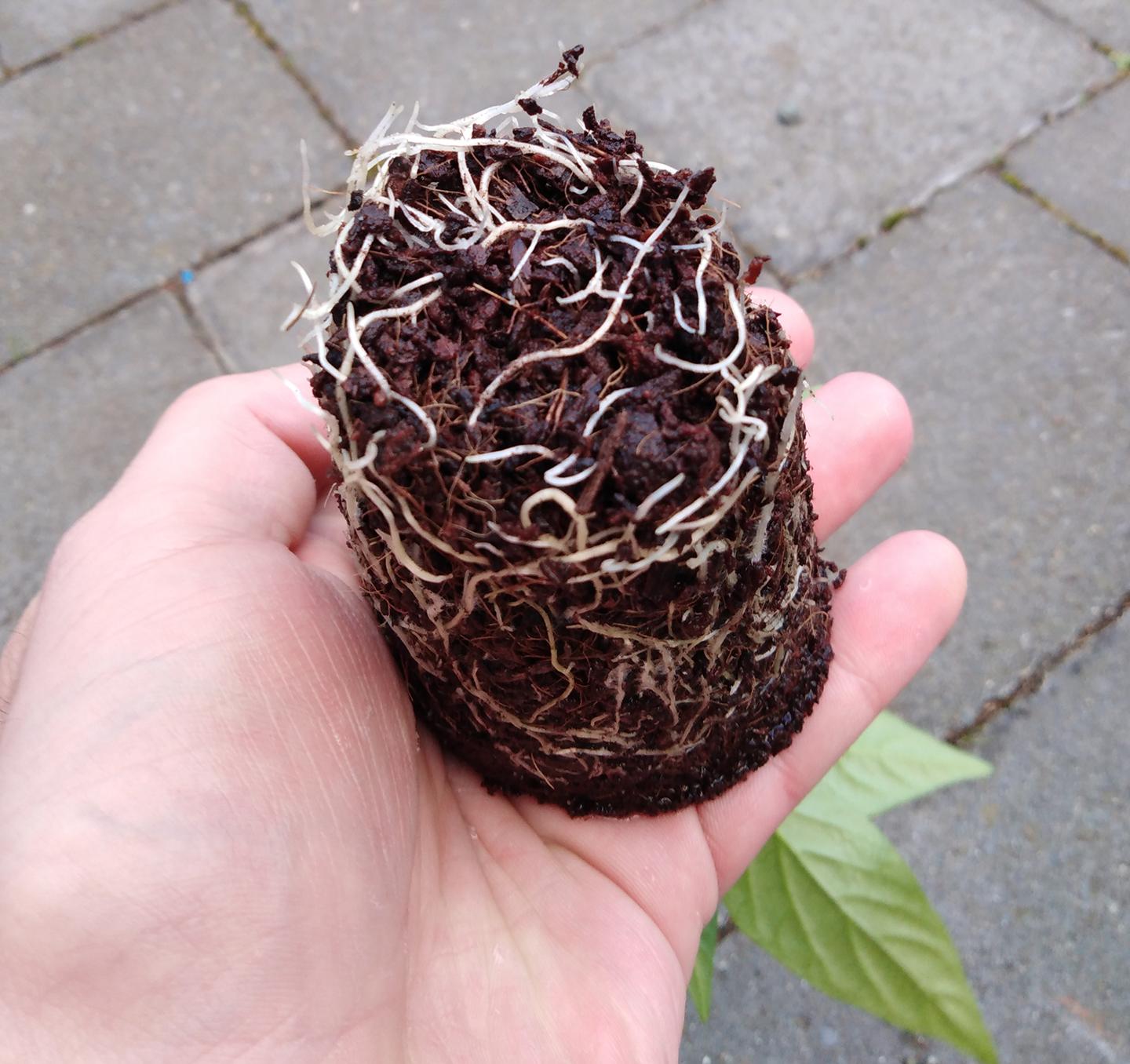This is just a small glog where I will be testing out finely sifted coco coir versus chunky coarse coco coir.
I used a brick (Nutrifield 5kg block) which was expanded in my bath tub and then let some coco dry out. It was then sieved and seperated into two piles, fine coco and coarse coco.
This idea came from Blister and you can read more about it in his thread here.
Supposedly this coco coir was buffered and RHP certified but it has been washed with 5ml/gallon of calmag (PH'd to 5.8) to be safe.
I took some cayenne seeds from a fresh pepper and dried them and then soaked them in diluted black tea for 12 hours.
Then I planted 7 seeds in 1 cup of fine coco and 7 seeds in 1 cup of coarse coco.
The cups were placed outside in the sun and brought inside at night, no heating mat or humidity domes.
Apologies for the photo quality, my phone camera is not the best.
Day 1:
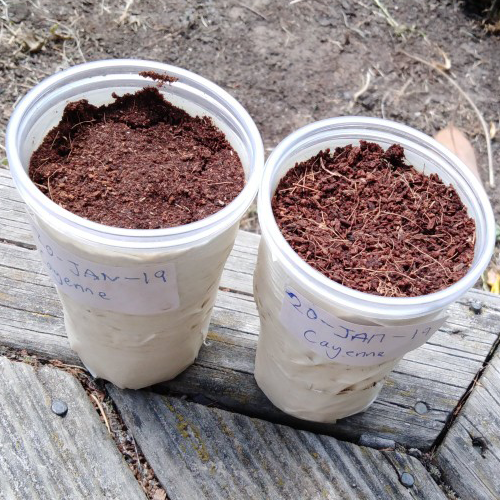
The fine coco on the left only needs 1-2 mistings, maybe 3 on a very sunny day. The coarse coco on the right dries out a lot quicker and needs to be misted up to 10 times per day.
Day 7:
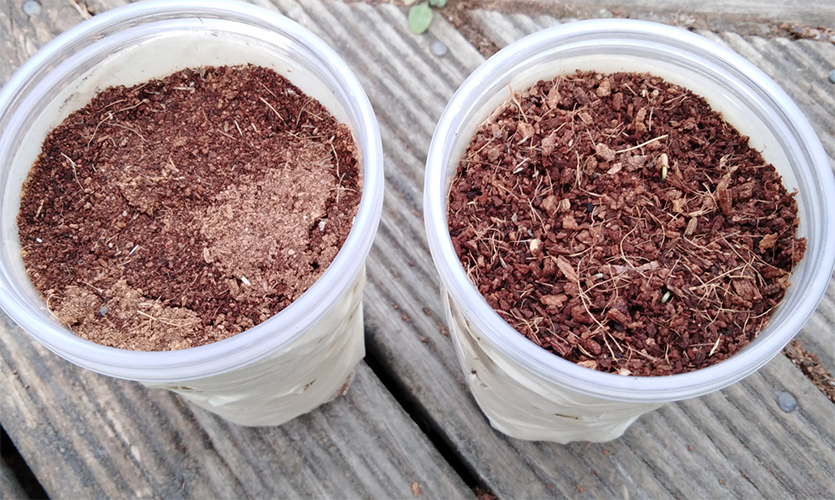
The seedlings emerge. One in the fine coco on the left and 3 in the coarse coco on the right. It looks like the seed casing is stuck on the coarse coco seeds but is not stuck on the fine coco seeds.
Day 8:
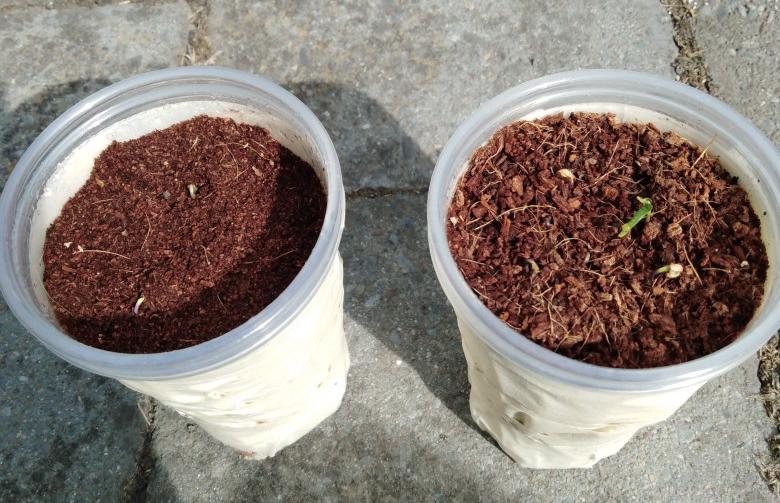
Lots of growth over 24 hours. On the left in the fine coco 2 seedlings have emerged but not fully, it looks like they will not have helmet heads. 6 seeds have emerged from the coarse coco on the right but many of them have helmet heads. Currently it looks like the germination is slower in fine coco but will result in less helmet heads. My guess is that if these were in a humidity dome and over a heat pad the germination speed for both fine and coarse coco would be very similar.
My current conclusion is that the finer coco might take a little bit longer to germinate but the amount of helmet heads will be significantly less. If this is the case I think the trade off is worth it. I'd rather have germination take a few days longer than have helmet heads which can potentially kill a seedling but only time will tell what will happen.
Another update will be posted when there is a significant change.
Once these are bigger I will be taking the four healthiest looking seedlings and placing each one in a red solo shot cup with fresh sieved coarse canna professional plus coco.
Cayenne A will get plain tap water (no PH)
Cayenne B will get plain tap water (PH'd to 5.8)
Cayenne C will get diluted lucas formula + cal mag (PH'd to 5.8)
Cayenne B will get diluted lucas formula + cal mag + Indole-3-butyric Acid/Amino Acid blend (PH'd to 5.8).
After a while we will see what the differences in feeding does to the width, height and health of the plants, the colour of the leaves, the amount of the leaves and the size and health of the roots.
Thank you for reading.
I used a brick (Nutrifield 5kg block) which was expanded in my bath tub and then let some coco dry out. It was then sieved and seperated into two piles, fine coco and coarse coco.
This idea came from Blister and you can read more about it in his thread here.
Supposedly this coco coir was buffered and RHP certified but it has been washed with 5ml/gallon of calmag (PH'd to 5.8) to be safe.
I took some cayenne seeds from a fresh pepper and dried them and then soaked them in diluted black tea for 12 hours.
Then I planted 7 seeds in 1 cup of fine coco and 7 seeds in 1 cup of coarse coco.
The cups were placed outside in the sun and brought inside at night, no heating mat or humidity domes.
Apologies for the photo quality, my phone camera is not the best.
Day 1:

The fine coco on the left only needs 1-2 mistings, maybe 3 on a very sunny day. The coarse coco on the right dries out a lot quicker and needs to be misted up to 10 times per day.
Day 7:

The seedlings emerge. One in the fine coco on the left and 3 in the coarse coco on the right. It looks like the seed casing is stuck on the coarse coco seeds but is not stuck on the fine coco seeds.
Day 8:

Lots of growth over 24 hours. On the left in the fine coco 2 seedlings have emerged but not fully, it looks like they will not have helmet heads. 6 seeds have emerged from the coarse coco on the right but many of them have helmet heads. Currently it looks like the germination is slower in fine coco but will result in less helmet heads. My guess is that if these were in a humidity dome and over a heat pad the germination speed for both fine and coarse coco would be very similar.
My current conclusion is that the finer coco might take a little bit longer to germinate but the amount of helmet heads will be significantly less. If this is the case I think the trade off is worth it. I'd rather have germination take a few days longer than have helmet heads which can potentially kill a seedling but only time will tell what will happen.
Another update will be posted when there is a significant change.
Once these are bigger I will be taking the four healthiest looking seedlings and placing each one in a red solo shot cup with fresh sieved coarse canna professional plus coco.
Cayenne A will get plain tap water (no PH)
Cayenne B will get plain tap water (PH'd to 5.8)
Cayenne C will get diluted lucas formula + cal mag (PH'd to 5.8)
Cayenne B will get diluted lucas formula + cal mag + Indole-3-butyric Acid/Amino Acid blend (PH'd to 5.8).
After a while we will see what the differences in feeding does to the width, height and health of the plants, the colour of the leaves, the amount of the leaves and the size and health of the roots.
Thank you for reading.

